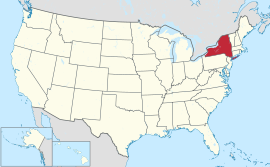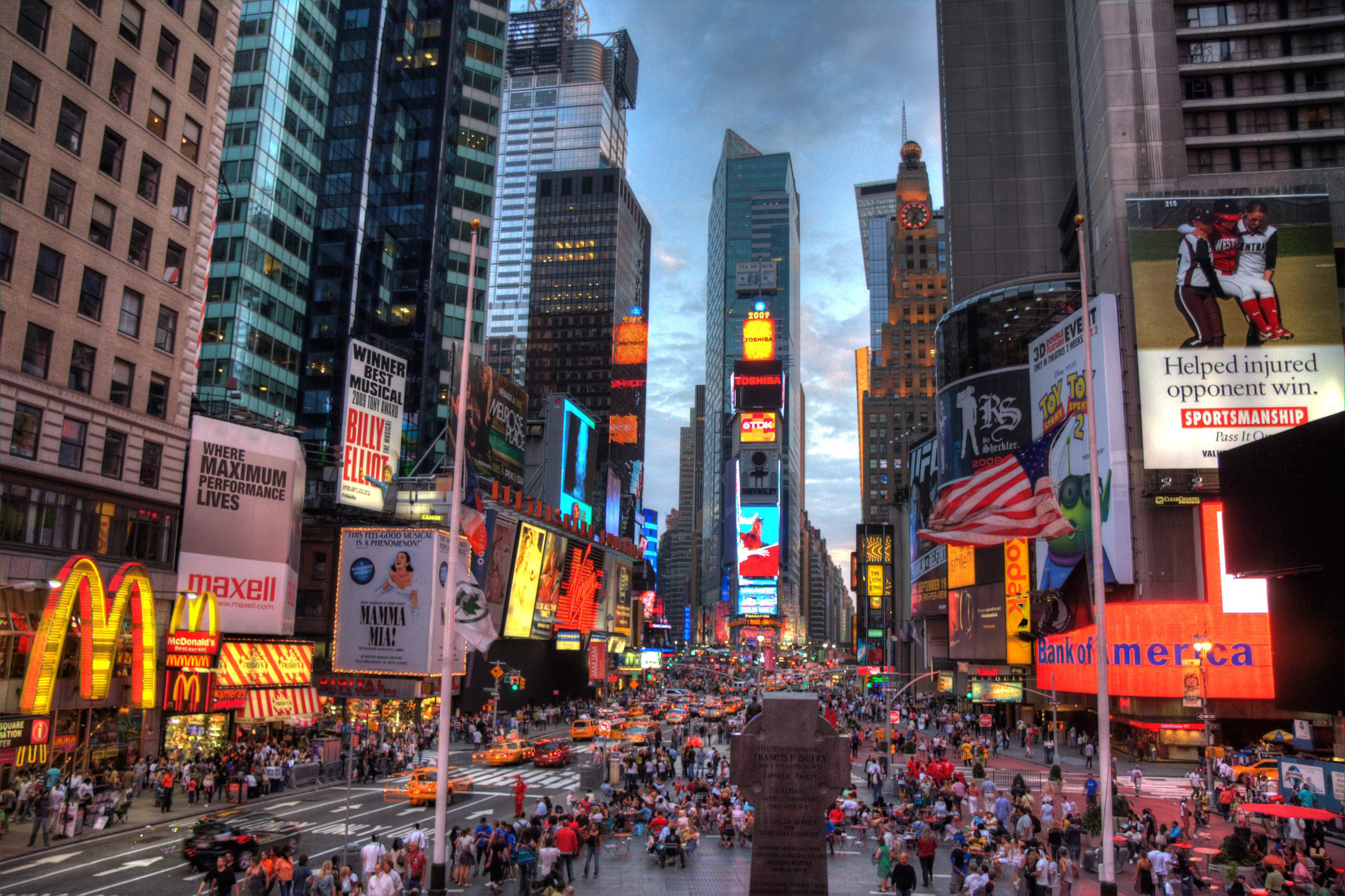 New York is a state in the Northeastern and Mid-Atlantic regions of the United States. New York is the 27th-most extensive, the fourth-most populous, and the seventh-most densely populated of the 50 United States. New York is bordered by New Jersey and Pennsylvania to the south and Connecticut, Massachusetts, and Vermont to the east. The state has a maritime border with Rhode Island east of Long Island, as well as an international border with the Canadian provinces of Quebec to the north and Ontario to the west and north. The state of New York is often referred to as New York State or the State of New York to distinguish it from New York City, the state's most populous city and its economic hub.
New York is a state in the Northeastern and Mid-Atlantic regions of the United States. New York is the 27th-most extensive, the fourth-most populous, and the seventh-most densely populated of the 50 United States. New York is bordered by New Jersey and Pennsylvania to the south and Connecticut, Massachusetts, and Vermont to the east. The state has a maritime border with Rhode Island east of Long Island, as well as an international border with the Canadian provinces of Quebec to the north and Ontario to the west and north. The state of New York is often referred to as New York State or the State of New York to distinguish it from New York City, the state's most populous city and its economic hub.With a Census-estimated population of nearly 8.5 million in 2014,[8][9] New York City is the most populous city in the United States. The city is the nucleus of the premier gateway for legal immigration to the United States[10][11][12]—the New York City Metropolitan Area, one of the most populous urban agglomerations in the world.[13][14] New York City is also known for being the location of Ellis Island, the largest historical gateway for immigration in the history of the United States. A global power city,[15] New York City exerts a significant impact upon commerce, finance, media, art, fashion, research, technology, education, and entertainment. The home of the United Nations Headquarters,[16] New York City is an important center for international diplomacy[17] and has been described as the cultural and financial capital of the world,[18][19][20][21][22] as well as the world's most economically powerful city.[23][22][24] New York City alone makes up over 40 percent of the population of New York State. Two-thirds of the state's population lives in the New York City Metropolitan Area, and nearly 40% live on Long Island.[9] Both the state and New York City were named for the 17th century Duke of York, future King James II of England. The next four most populous cities in the state are Buffalo, Rochester, Yonkers, and Syracuse, while the state capital is Albany.






